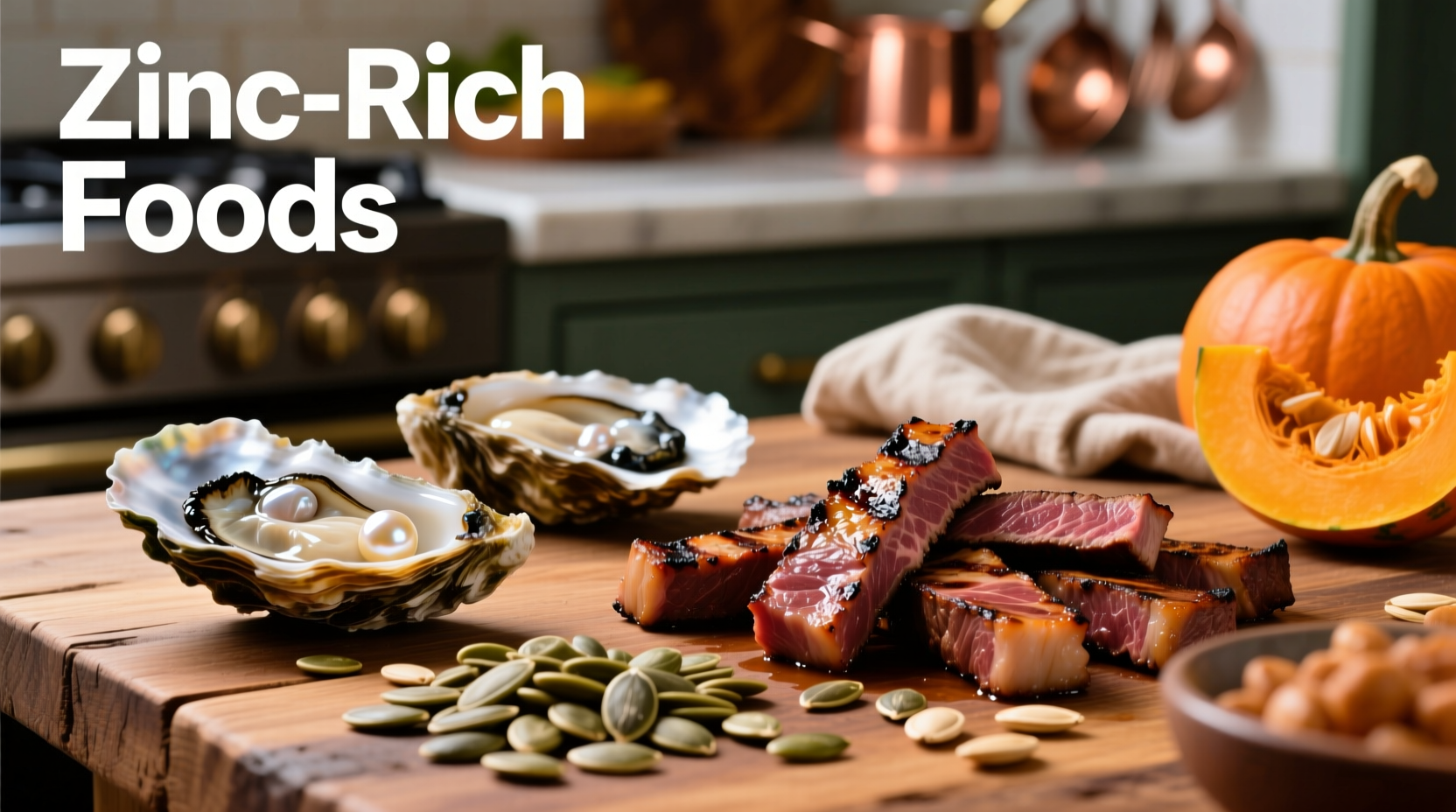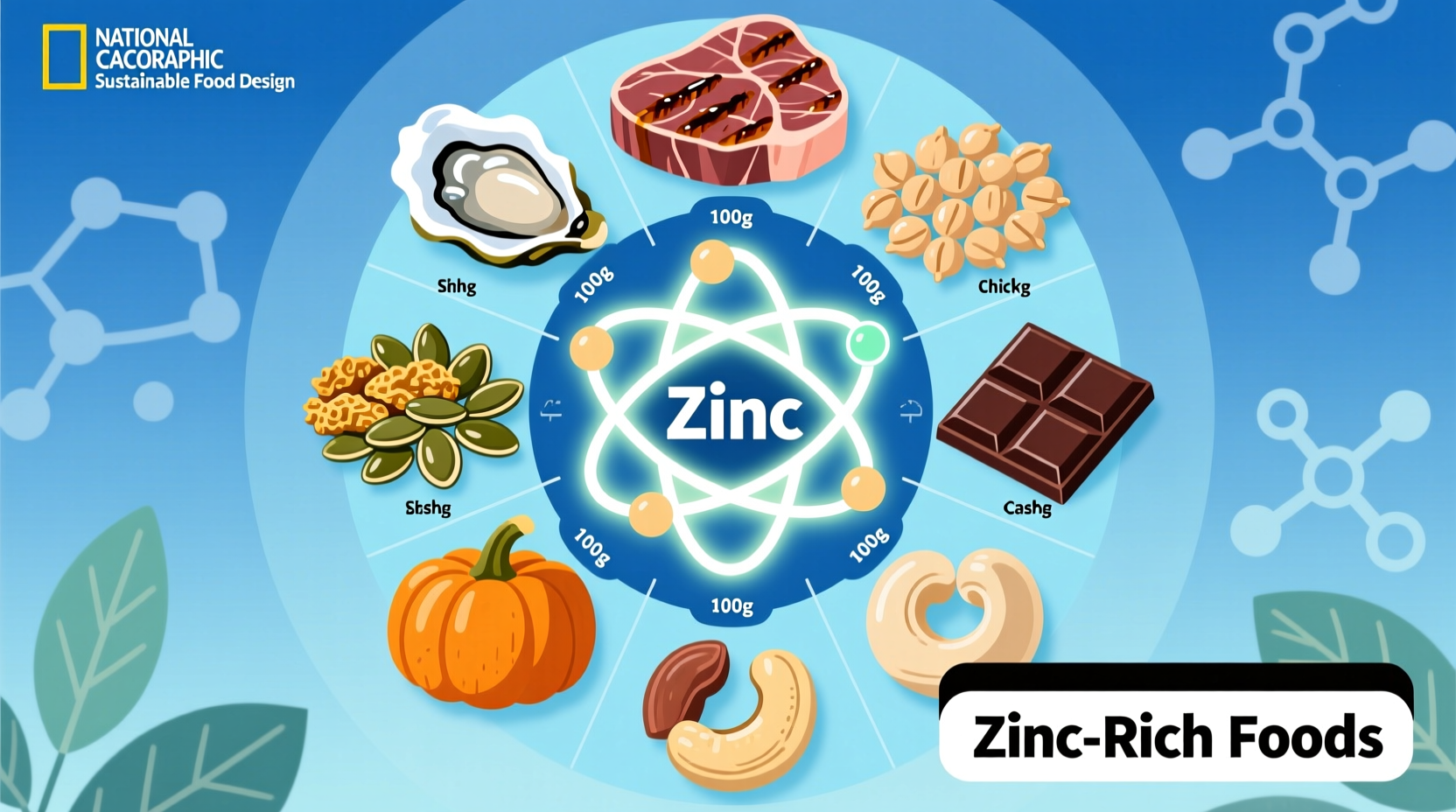Discover exactly which foods deliver the zinc your body needs to support immune function, wound healing, and DNA synthesis. Whether you follow a meat-based, vegetarian, or vegan diet, this comprehensive guide provides science-backed information about zinc-rich foods with precise measurements and practical incorporation strategies.
Why Zinc Matters for Your Health
Zinc serves as a critical mineral involved in more than 300 enzymatic reactions in your body. According to the National Institutes of Health, adequate zinc intake supports:
- Immune system function (reducing duration of common colds by 33%)
- Protein synthesis and cell division
- Wound healing processes
- Sensory perception including taste and smell
- DNA synthesis and cellular metabolism
Daily requirements vary by age and gender, with adult men needing 11mg and women requiring 8mg daily. Pregnant and breastfeeding women need 11-12mg. Understanding which foods provide these essential amounts helps prevent deficiency symptoms like impaired immune function and hair loss.
Top Animal-Based Zinc Sources
Animal proteins generally offer higher zinc bioavailability due to the absence of phytates that inhibit absorption in plant foods. Here are the most concentrated sources:
| Food | Portion | Zinc (mg) | % Daily Value |
|---|---|---|---|
| Oysters, cooked | 3 oz (85g) | 74.1 | 674% |
| Beef shank, cooked | 3 oz (85g) | 7.0 | 64% |
| Crab, cooked | 3 oz (85g) | 6.5 | 59% |
| Lobster, cooked | 3 oz (85g) | 3.4 | 31% |
| Pork chop, cooked | 3 oz (85g) | 2.9 | 26% |
| Chicken dark meat, cooked | 3 oz (85g) | 2.7 | 25% |
Notice how oysters dramatically outperform other sources - just two medium oysters provide more than your entire daily requirement. The USDA FoodData Central database confirms these values through laboratory analysis of representative food samples.

Plant-Based Zinc Powerhouses
For vegetarians and vegans, these plant foods provide substantial zinc, though absorption rates are typically 15-35% lower than animal sources due to phytates:
- Pumpkin seeds: 2.2mg per ounce (20% DV) - also rich in magnesium and healthy fats
- Lentils: 2.5mg per cooked cup (23% DV) - pair with vitamin C foods to boost absorption
- Chickpeas: 2.5mg per cooked cup (23% DV) - soak overnight to reduce phytate content
- Quinoa: 2.0mg per cooked cup (18% DV) - one of few complete protein grains
- Mushrooms (shiitake): 1.4mg per cooked cup (13% DV) - especially high in zinc among vegetables
Research published in the Journal of Nutrition and Metabolism shows that vegetarians typically need about 50% more zinc than meat-eaters due to lower bioavailability. Strategic food combinations can significantly improve absorption.
Maximizing Zinc Absorption From Food
Understanding these context boundaries dramatically impacts how much zinc your body actually utilizes:
- Pair with vitamin C: Consuming zinc-rich foods with citrus fruits, bell peppers, or tomatoes can increase absorption by up to 30%
- Soak and sprout: Preparing legumes and grains this way reduces phytate content by 20-50%
- Avoid simultaneous consumption with calcium-rich foods or supplements, as calcium competes with zinc for absorption
- Cook in cast iron: Acidic foods prepared in cast iron cookware absorb small amounts of additional zinc
The National Academy of Medicine notes that zinc absorption efficiency varies based on your current zinc status - when deficient, your body absorbs more, while excess zinc intake triggers regulatory mechanisms that reduce absorption.
Special Dietary Considerations
Different dietary patterns require tailored approaches to meet zinc requirements:
For vegetarians and vegans: Focus on combining zinc-rich plant foods with absorption enhancers. A single cup of cooked lentils with lemon-tossed spinach provides nearly 40% of daily needs with improved bioavailability.
For older adults: Zinc absorption decreases with age, while requirements remain constant. The National Institute on Aging recommends older adults prioritize zinc-rich foods while monitoring for deficiency symptoms.
For athletes: Intense physical activity increases zinc loss through sweat. Endurance athletes may require up to 50% more zinc than sedentary individuals to maintain optimal immune function.
Practical Incorporation Strategies
Transform your zinc intake with these simple, actionable techniques:
- Add pumpkin seeds to morning oatmeal or yogurt (provides 20% of daily zinc)
- Replace half the ground beef in recipes with cooked lentils (maintains zinc content while adding fiber)
- Create a weekly zinc-boosting salad with chickpeas, mushrooms, and bell peppers
- Choose whole grain breads made with sourdough fermentation (reduces phytates)
- Snack on a small handful of cashews and almonds (provides 15% of daily zinc)
Remember that consistent daily intake matters more than occasional high-zinc meals. Your body maintains a relatively small zinc reserve compared to other minerals, making regular dietary sources essential.
Avoiding Common Zinc Mistakes
Many people unknowingly undermine their zinc status through these common errors:
- Over-reliance on supplements: Excessive zinc intake (>40mg daily) can cause copper deficiency and immune impairment
- Consuming high-calcium foods simultaneously with zinc-rich meals reduces absorption by up to 50%
- Processing foods incorrectly: Not soaking beans or fermenting grains leaves phytates intact
- Misunderstanding serving sizes: A "cup" of cooked beans differs significantly from raw measurements
The Food and Nutrition Board emphasizes that food sources provide zinc in balanced proportions with other nutrients, making them preferable to supplements for most people.
Frequently Asked Questions
Here are answers to the most common questions about dietary zinc sources:











 浙公网安备
33010002000092号
浙公网安备
33010002000092号 浙B2-20120091-4
浙B2-20120091-4